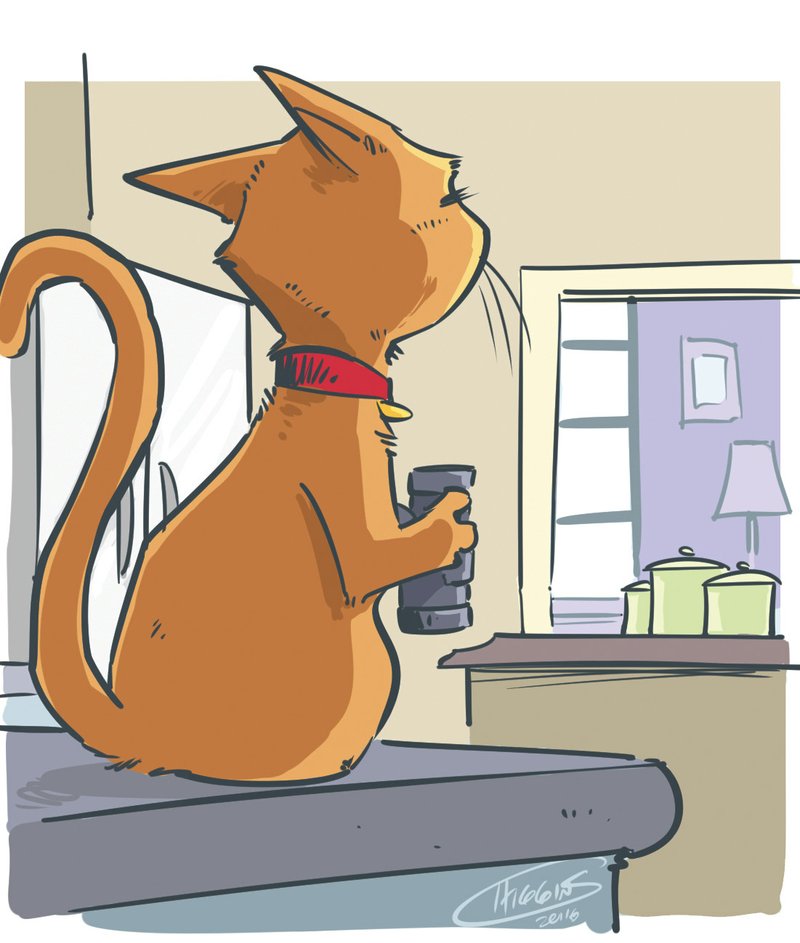I read in your column about a mat people can buy to keep cats off kitchen counters. My cat gets on the counter sometimes, but I would prefer to find a way to stop her without stressing her or spending a lot of money. Please share some ideas. Tell the truth, the counter thing doesn't upset me much. I just make sure I clean the countertop with antibacterial spray before fixing food there.
Cats are capable of leaping up to five to seven times their own height, which means bounding onto kitchen counters, bookshelves and even the top of the refrigerator offers little challenge. The reward, however, is huge because cats love to jump.
"By nature, cats are three-dimensional creatures with a vertical dimension that is part of their natural inclination," says Nicholas Dodman of the Cummins School of Veterinary Medicine at Tufts University in the May issue of Catnip. Our feline acrobats don't want to stay on the ground because they enjoy keeping an eye on the world around them from the safety of a high perch. Their natural curiosity also compels them to explore the loftier planes of their existence, such as our countertops.
A person determined to keep a cat's paws on the floor will be frequently frustrated, but undue stress over counter surfing needn't be an emotional constant. Several ways to address the issue exist, among them the electronic PetSafe ScatMat deterrent mentioned in the April 20 column. But there are other tactics to try first, including redirection to alternate locations and positive reinforcement for desired behavior.
Actually, you can combine redirection with positive reinforcement. In Think Like a Cat, feline behaviorist Pam Johnson-Bennett suggests providing a cat with an alternate elevated location such as a multilevel cat tree or window perch. When the cat jumps up on the counter or a tabletop, clap your hands to get the cat's attention, then direct him to the acceptable area -- a stool, rug or a pillow if you don't have a cat tree. When the cat is in the desired spot, praise and pet him. You might even reward him with a small food treat.
Obviously, treats and praise are positive reinforcement. Redirection involves luring the cat to the alternate spot with his favorite toy, a catnip-filled mouse or a teaser toy (a stick with feathers or a toy attached to one end). If your cat enjoys playing, interactive playtime with you and his toys can be a reward in itself.
Pet owners sometimes are advised to spray their cats with water or blow an air horn to scare them off the counter, but animal behaviorist Dodman says he believes aversive tactics are the least effective training methods. They can make skittish cats anxious, plus teach a cat to avoid his owner rather than the countertop.
Whatever attitude a person takes toward counter surfing, Dodman says the best approach is to offer a cat a variety of elevated surfaces to satisfy his vertical inclinations. Along with cat condos and carpeted trees, an owner can use ladders and steps to create "catwalks" throughout a house. A cat could even be provided with a designated shelf (without books or knickknacks) where he can lounge and observe his world in safety and comfort.
The simplest approach of all may be acceptance, Dodman says. An owner could find it easier to learn to live with a cat's vertical inclination than to focus on persuading the cat to go against its nature. Resolving to clean countertops before food preparation instead of becoming stressed about the cat on the counter can make life easier on everyone in the household.
Family on 05/04/2016
